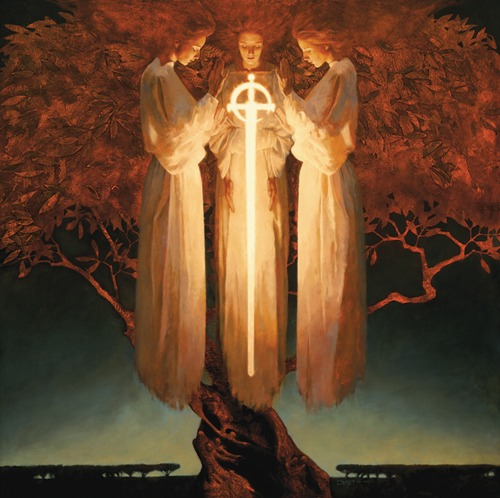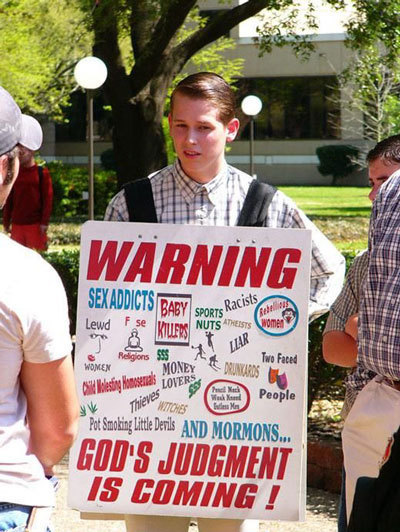
So I drove out the man, and I placed at the east of the Garden of Eden, cherubim and a flaming sword, which turned every way to keep the way to the tree of life. (Moses 4:31; cf. Genesis 3:24)
Nephi’s vision of the Tree of Life (1 Nephi 11-15) contains imagery that ties into the description in Genesis/Moses of ‘a flaming sword…[keeping] the way to the tree of life’, but only after correcting for an apparent typographical error in the current editions of the Book of Mormon.
Royal Skousen, as part of his Book of Mormon critical text project, has reached the conclusion that 1 Nephi 12:18 in the original Book of Mormon manuscript (which still exists for that passage) says the following:
…and a great and terrible gulf divideth them yea even the sword of the justice of the eternal God…1 (emphasis added)
Note that this differs from our current edition of the Book of Mormon, which reads “word” instead of “sword”.2 This passage describes that which divides the wicked in the ‘great and spacious building’ from the Tree of Life, namely, ‘the sword of the justice of the eternal God’.
Nephi in later explaining Lehi’s (and his own) vision to his brothers Laman and Lemuel uses slightly different — but, in my opinion, related — imagery:
And I said unto them that it was an awful gulf, which separated the wicked from the tree of life, and also from the saints of God….And I said unto them that our father also saw that the justice of God did also divide the wicked from the righteous; and the brightness thereof was like unto the brightness of a flaming fire, which ascendeth up unto God forever and ever, and hath no end. (1 Nephi 15:28, 30; emphasis added)
Combining Nephi’s descriptions of his (and Lehi’s) vision of the Tree of Life, we have ‘the justice of God’ represented as both a sword and a flaming fire — combined, a flaming sword — and in both cases keeping the Tree of Life from those who choose the world (the ‘great and spacious building’) instead of coming to the Tree of Life on God’s terms.
In short, we have Genesis imagery in Nephi’s and Lehi’s vision of the Tree of Life. One could argue that there is temple imagery in there as well, since the structure of the Tabernacle and Solomon’s Temple has been interpreted as a reversal of the fall of Adam, with the candlestick (menorah) in the Holy Place representing the Tree of Life.3
What is perhaps more interesting is that we get through this vision an interpretation of the ‘flaming sword’ mentioned in Genesis — the justice of God, which prevents us in our willful state from approaching the Tree of Life. What the rest of Nephi’s vision tells us is that it is the love and condescension of God that gives us a path (‘strait and narrow’) and a guide (‘a rod of iron’)4 by which we can come and partake of the Tree of Life and thus enter back into God’s presence. ..bruce..
===================
1 Analysis of Textual Variants of the Book of Mormon: Part One (Title Page, Witness Statements, 1 Nephi 1 – 2 Nephi 10), Royal Skousen (FARMS/BYU, 2004), pp. 257-258.
2 On the other hand, see “The Word of God” by Leslie Taylor, Journal of Book of Mormon Studies, Vol. 12, No. 1 (2003), pp. 52-63, for an indication that the differences between ‘sword of God’ and ‘word of God’ as used in the scriptures may not be all that great.
3 See “Garden of Eden: Prototype Sanctuary” by Donald W. Parry, Temples of the Ancient World, edited by Donald W. Parry (Deseret Book/FARM, 1994), esp. p. 129 and pp. 134-135.
4 But see Skousen (above), pp. 174-181, who argues that this should be “straight and narrow”.
